Island of Rememberance
Apartheid was from 1948 to 1991. Apartheid was the separation of non-whites (colored, Asian, and blacks) from whites. During Apartheid, Robben Island became a place of history, and has been ever since. During the time of Apartheid, Robben Island was used as a prison. Robben Island has not always been used for a prison though. The island has also been used as a hospital for wacky people and for people with leperacy. The island was also used for a training and defense station for World War II.
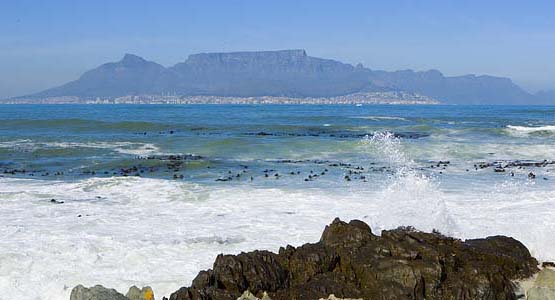
Black leaders and people who acted out to try and stop Apartheid were taken to Robben Island to be imprisoned. Of all the Black leaders taken to Robben Island, the most famous include Nelson Mandela and Robert Mangaliso Sobukwe (head of the PAC, Pan Africanist Congress). The prisoners were all arrested for doing two things: speaking out against Apartheid and using different methods of force including protests and boycotts to make Apartheid stop.
It takes a 25-minute boat ride to reach Robben Island from Table Bay but it is well worth the time. It is hard to see Robben Island from the main land, because it is so small in size. It is also makes it hard to see from the main land because there are few buildings so it doesn’t really stand out on the water.
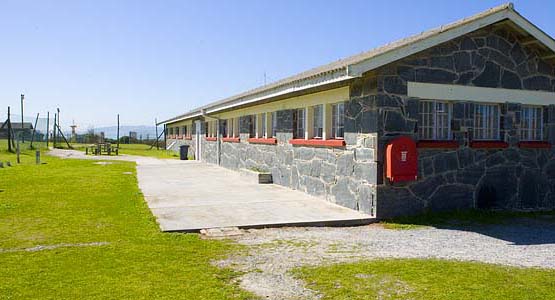
Apartheid was a very dangerous time for blacks so a lot of times you didn’t tell everyone in your family if anyone, that you were working against the white government. So if you went to Robben Island to be imprisoned most or all of your family would think you were dead. Only the people that knew you were at Robben Island came to visit you.
Robben Island has many prisons. The most secure prison was the maximum-security prison which the black leaders like Nelson Mandela stayed in. The walls are thick and tall so you can’t see out. Each prisons cell door had metal bars and then a thick wooden door in front of the metal bars. The windows are small. The reason is so it is hard to tell when security guards are coming, so you can’t hide anything. You can bring few belongings with you when imprisoned. In the maximum-security prison your cell was 8’ x 8’ with two mats and three thin blankets for bedding. A little TV-tray sized table was your only piece of furniture. One cup and one plate were provided to eat with. Your toilet was a bucket with a lid and you had one 1’x3’ cabinet for your belongings.
Prisoners ate different things depending on their race (black, colored, Asian).
The colored and Asians always got more food, then the blacks though. It was this way because blacks were considered the lowest of the group. Asian and coloreds were considered equally bad but not as bad as the blacks or as good as the whites. A colored person is when a white person marries a black person, then their kids are considered colored.
After awhile it was confirmed that the prisoners were mistreated at Robben Island. After more protests on the main land they soon got better sleeping conditions so the two mats that they once had for a bed soon turned into a bed with two sheets and five blankets.
Many prisoners died in prison because of the horrible medical conditions. This was all because the doctors simply didn’t care. This was extremely bad because it was easy to pick up diseases at Robben Island because of the coldness at night and un-cleanliness of the prison cells.
Also when blacks, colored, and Asian were imprisoned they worked at a place called the Limestone Quarry. They worked eight hours a day seven days a week, at the Lime Quarry. The Limestone work was very difficult work under the sun and it was sometimes painful because of their eyes. The men were working most of the time so a lot of limestone dust often got in their eyes and they were some times blinded because of it.
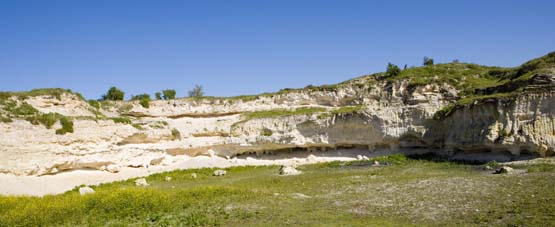
At the prison everyone wanted to be educated because they knew it was important to be educated in life. At first, they had schooling in secret. Then after protesters on the main land demanding that they should be granted the right to do schooling and study, the prisoners started schooling again but this time not in secret. Smugglers helped get the prisoners get books and other materials they needed for schooling. Everyday after work they would study with the materials they had. First they would study in their prison room. After the lights were turned off, they moved to the bathroom where the lights stayed on all night.
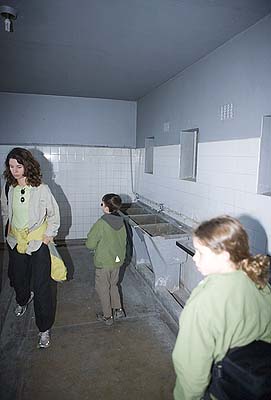
During Apartheid Nelson Mandela was one of the leaders of the black people and helped stand up for their rights. For his actions the police wanted him, and at the age 44 they found him and took him to Robben Island to be imprisoned. At Robben Island he was put into the maximum-security prison and there he stayed for eighteen years. During the time Mandela was imprisoned at Robben Island he planted a garden with apples and grapes and other fruits in it. Mandela also secretly started the manuscript that later became the book The Long Walk To Freedom. In the garden he hid the papers that were to be in the book, because they would be easily found in his prison cell.
From Robben Island Mandela was moved to a different prison on the main land. He stayed at that prison for ten years. Finally F.W De Klerk, the white president of South Africa at the time, realized Apartheid was wrong and he let Nelson Mandela and the others free, and stopped Apartheid once and for all. De Klerk stepped down as president and the first free elections were held in South Africa in 1994. Nelson Mandela won the election and he became the first black president of South Africa.
The prisoners knew they would be realized as important people one day. They were right. South Africa may still be under Apartheid if it wasn’t for them, the men and woman who risked their lives to stop Apartheid and also the ones that did die for it.
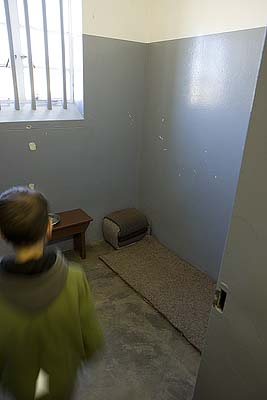
“ I have fought against white domination, and I have fought against black domination. I have cherished the ideal of a democratic and a free society in which all persons live together in harmony and with equal opportunities. It is an ideal, which I hope to live for to achieve. But if needs be, it is an ideal for which I am prepared to die.”
Quote by: Nelson Mandela
Tags: Apartheid, Mandela, Politcal, Prison, Robben Island, South Africa, Travel

Great blog entries! They’re very detailed and entertaining. I need to stop in here for inspiration I think next time I get hit with the “writer’s block.” Enjoy the rest of South Africa and keep up the entries, I look forward to the new ones.
Interesting that imprisoned people badly wanted what they can’t have: education! How can we get some of that desire to rub off on current generation of youngsters?